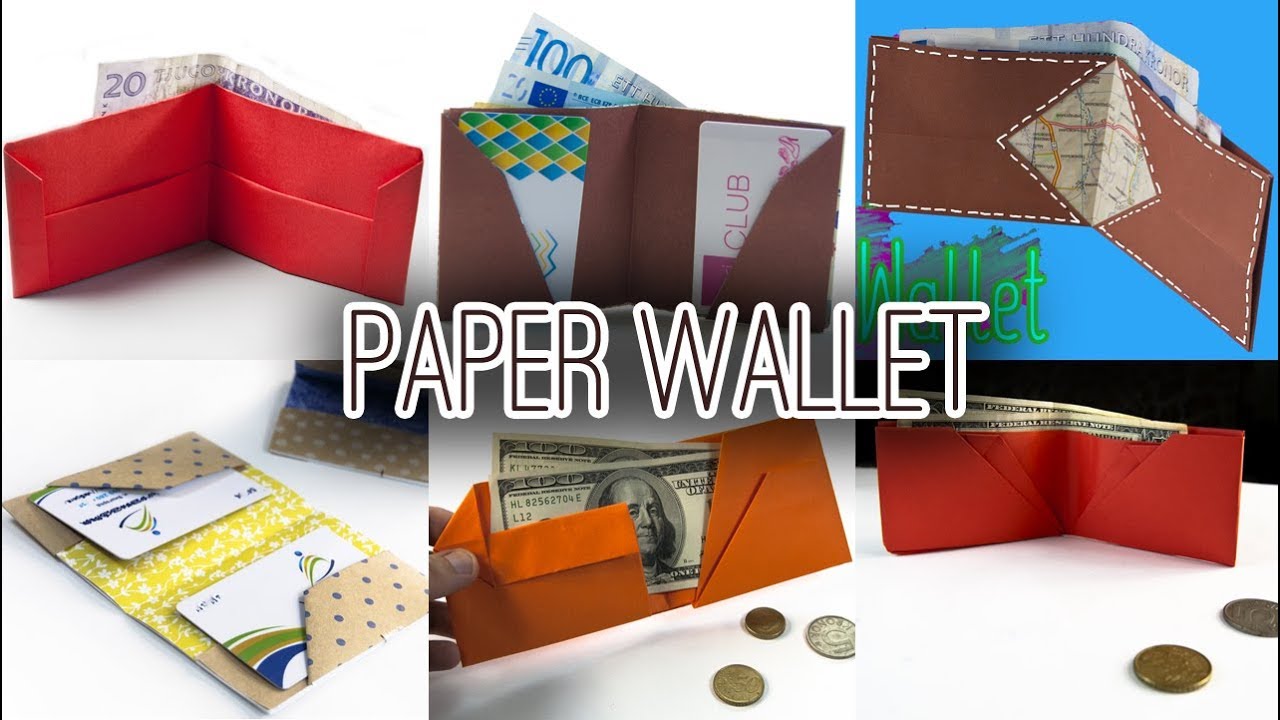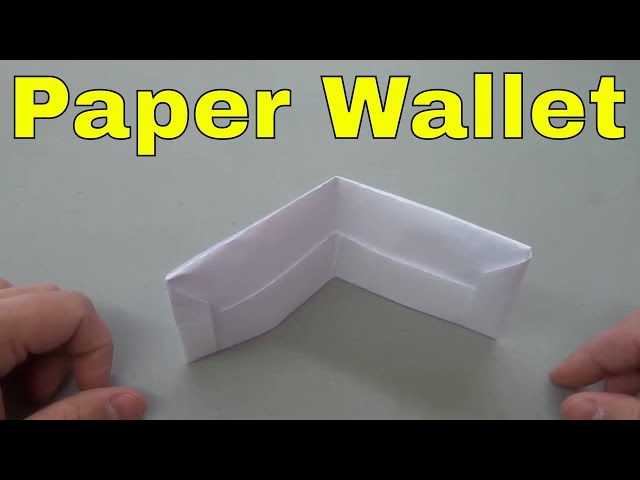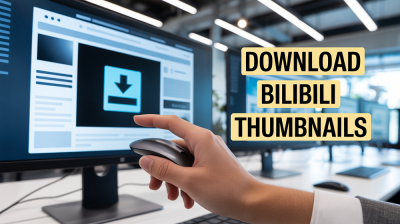In the world of cryptocurrency, security is paramount. One safe and simple way to store your digital assets is through a paper wallet. If you're scratching your head wondering what that is or how to create one, you're in the right place! In this blog post, we’ll walk you through the essentials of paper wallets, why they’re beneficial, and the step-by-step process to create one securely.
What is a Paper Wallet?

A paper wallet is a physical document that contains your cryptocurrency private keys and public addresses. Essentially, it’s a way to hold your bitcoins or other digital currencies offline, which means they're less vulnerable to hacking and cyber threats.
So, why would anyone use a paper wallet? Here are some key benefits:
- Security: Since paper wallets are not stored on a computer or an online service, they’re immune to online hacking.
- Cold Storage: They offer cold storage capabilities, keeping your funds entirely offline.
- Simple and Accessible: Anyone can create one, and you don’t need any advanced technical skills.
- No Third Party: You have complete control over your assets. No need to trust an exchange or a wallet service.
Here’s a little more detail on how a paper wallet works:
A paper wallet typically contains both a public key and a private key:
- Public Key: This is your wallet address, which you share with others when you want to receive cryptocurrency.
- Private Key: This is what you use to access and control your funds. Treat this like a password—if someone gets hold of it, they can access your wallet.
Generating a paper wallet usually involves using a secure website or software to create a new wallet. These tools will generate a pair of keys and provide you with a printable receipt that you can store safely. Some people choose to include QR codes on their paper wallets for convenience, allowing for easy scanning when you want to send or receive funds.
However, it’s important to take precautions when creating and storing a paper wallet:
- Generate It Offline: For maximum security, generate your paper wallet offline. This reduces the risk of exposure to online attacks.
- Print Securely: Use a secure printer, and ensure that no one can see your screen while printing.
- Store Safely: Keep your paper wallet in a safe place, like a safe deposit box or a fireproof safe, to prevent loss or damage.
With its unique combination of security and simplicity, the paper wallet remains a popular choice among crypto enthusiasts who value their privacy and want to ensure their holdings are safe from digital threats.
Also Read This: Complete Tutorial for Streaming Dailymotion to Roku Devices
3. Benefits of Using a Paper Wallet

When it comes to storing cryptocurrency, security is key. One popular method that stands out is the paper wallet. Let's explore some of the major benefits of using a paper wallet to safeguard your digital assets.
- Enhanced Security: Unlike online wallets, paper wallets are not connected to the internet. This offline storage significantly reduces the risk of being hacked or compromised, making it a safer option for long-term storage.
- Control Over Your Funds: With a paper wallet, you have complete control of your private keys. This means that you are the sole custodian of your funds, eliminating the need to trust third-party services.
- Cost-Effective: Creating a paper wallet is free! You don’t need to pay any fees associated with online wallets or exchanges. All you need is a printer and some paper.
- Easy to Create: The process of generating and printing a paper wallet can be straightforward. There are numerous tools available online that simplify this process, making it accessible for even the most technologically challenged individuals.
- Portability: Once you've printed your paper wallet, you can carry it anywhere. You can neatly fold it or even place it in a secure location, ensuring that it is both lightweight and easily transportable.
- Supports Multiple Cryptos: Many paper wallet generation tools allow you to create wallets for various cryptocurrencies. This means you can consolidate your holdings into one tangible format.
While these benefits are significant, it's important to remember that with great benefits come responsibilities. Users must take care to store their paper wallets securely. If lost or damaged, access to the funds could be permanently lost. That said, when done correctly, creating a paper wallet can provide peace of mind knowing your assets are safeguarded.
Also Read This: How to Make an Edible Apple Swan: Fun Fruit Carving on Dailymotion
4. Materials Needed for Crafting a Paper Wallet
Creating a paper wallet might sound a bit daunting at first, but the good news is that the materials you'll need are quite simple and easy to gather. Here’s a list of what you should have on hand before you dive into crafting your own paper wallet.
- Printer: A reliable printer is essential for creating a physical copy of your wallet. It's best to use a printer that you can control, rather than a public one, to maintain privacy and security.
- Paper: You’ll need plain white paper or any durable paper for printing your wallet. To add an extra layer of security, consider using thicker paper that’s harder to tear.
- Scissors (optional): Depending on the format you plan to use, you might need scissors to cut the paper to your desired size. Some people prefer a compact size that fits neatly in a wallet or safe.
- Secure Internet Connection: When generating your wallet, make sure you’re using a secure internet connection. Avoid public Wi-Fi networks to reduce the risk of your info being intercepted.
- Bitcoin or Cryptocurrency Wallet Generator: This is a crucial tool for creating your wallet. Look for reputable options like Bitaddress.org or WalletGenerator.net to generate secure keys.
- Writing Tools (optional): If you prefer, you can also have pens or markers handy if you wish to label your wallet or jot down any important information about your holdings.
Once you have everything ready, you're all set to start the process of creating your own paper wallet! Remember to take your time and double-check your work for accuracy. Proper preparation is half the battle in securely managing your cryptocurrency investments!
Also Read This: The Ultimate Guide to Downloading Videos on Dailymotion in Simple Steps
5. Step-by-Step Instructions for Creating Your Paper Wallet
Creating a paper wallet for your cryptocurrency holdings is a straightforward process, and it’s a great way to enhance your digital security. Just follow these steps, and you’ll be on your way to having a safe, offline storage solution for your digital assets.
Step 1: Choose a Secure Environment
First things first! Make sure you’re in a safe, secure environment where no one can spy on you. This means avoiding public Wi-Fi and any devices that might have malware. It’s best to work on a clean, trusted device. If you can, use a computer that isn't connected to the internet.
Step 2: Visit a Trusted Paper Wallet Generator
There are several paper wallet generators available online, but you want to ensure that you choose a reputable one. Some popular options include:
For maximum security, you can also download the code and run it locally on your offline computer.
Step 3: Generate Your Wallet
Once you’re on the wallet generator site, follow the instructions to generate your new wallet. Typically, you will need to move your mouse around the screen or type random letters to create some entropy. This process helps generate strong private keys.
Once generated, you'll see your public address and private key. The public address is what you can share with others to receive funds, while the private key is what you need to access your funds.
Step 4: Print Your Wallet
After you’ve generated the wallet, choose the option to print it. Make sure your printer is also secure, ideally one that isn’t connected to the internet. When you print, ensure that the document is legible and includes both the public address and the private key.
Step 5: Verify Your Wallet
Check your printed wallet to confirm that both the public and private keys are there. It’s good practice to use a QR code scanner (while offline) to ensure the QR codes are correctly generated. This adds an extra layer of assurance that you can access your funds in the future.
Step 6: Destroy All Digital Copies
After you’ve successfully printed your paper wallet, make sure you delete any generated keys from your computer. If you used a web-based generator, clear your browser’s cache and history as well to ensure your keys can’t be retrieved.
Also Read This: Here’s How to Download Dailymotion Videos with Subtitles in Any Language
6. How to Safely Store and Use Your Paper Wallet
Now that you’ve created your paper wallet, the next step is to ensure it’s stored and used safely. Here are some tips to help you manage your new wallet without compromising your security.
Store in a Secure Location
Your paper wallet should be treated like cash. Store it in a safe, dry place where it won't get damaged. Good options include:
- A safe deposit box at a bank
- Home safes with good locking mechanisms
- Fireproof and waterproof bags
Consider Duplication
For redundancy, consider making multiple copies of your paper wallet. If you choose this option, ensure each copy is stored securely in different locations. This way, if you lose one, you still have access to your cryptocurrencies through another copy.
Avoid Using It Online
When it comes to transacting with your paper wallet, always exercise caution. If you need to use the funds, it’s wise to transfer them to a secure software or hardware wallet first. Use a clean, offline device to do this, and never share your private key with anyone.
Regularly Check Your Balance
Even though your paper wallet is offline, you should still keep track of the cryptocurrency held within. You can check your balance using a block explorer by entering your public address. This helps you stay informed of your asset's value without exposing your private key.
Be Wary of Scams
Finally, always be cautious of scams that target paper wallet users. Be skeptical of any unsolicited messages claiming you need to do something with your wallet or that offer a service to “help” you. The best practice is to manage everything related to your paper wallet yourself.
By following these storage and usage guidelines, you can maximize the security of your paper wallet and have peace of mind knowing that your cryptocurrencies are safe and sound!
Also Read This: How to Wear Saree Video on Dailymotion
7. Common Mistakes to Avoid When Crafting a Paper Wallet
Creating a paper wallet is a straightforward process, but it's easy to make mistakes that can lead to losing access to your cryptocurrencies. Here are some common pitfalls to watch out for:
- Not Generating a Secure Random Seed: One of the most critical aspects of creating a paper wallet is using a secure method to generate your private key. Avoid online generators, as they could be compromised. Instead, use a reputable cryptocurrency wallet software offline to create your keys.
- Insecure Printing: If you print your paper wallet from an unsecured network or a public printer, you risk someone else obtaining your private key. Always print your paper wallet from a secure device that you trust.
- Ignoring Backup: A paper wallet is only as safe as your ability to store it. Make multiple copies in different secure locations to avoid losing them due to fire, theft, or water damage. Don't place all your trust in one copy!
- Forgetting to Test: Before you transfer a significant amount of cryptocurrency to your paper wallet, test it with a small transaction. This step ensures that you can access your funds and have followed all necessary steps correctly.
- Using Insecure Storage Methods: Storing your paper wallet in a place that can be easily accessed or found by others can be disastrous. Consider using a safe deposit box or a fireproof and waterproof safe.
- Overlooking Key Recovery Options: If you're not prepared for scenarios where you might lose your paper wallet, such as forgetting its location or it being damaged, then you’re taking a significant risk. It’s essential to think ahead and have recovery options in mind.
By being aware of these common mistakes, you can take extra precautions and ensure that your paper wallet is as secure as possible. Always double-check your methods, and don't rush the process—taking your time can save you a lot of headaches in the future!
Also Read This: How to Block Ads on Dailymotion and Improve Your Viewing Experience
8. Conclusion and Final Thoughts
In conclusion, creating a paper wallet can be a simple, effective way to store your cryptocurrencies securely offline, making it less susceptible to hacking compared to online wallets. However, like any financial endeavor, it comes with its own set of challenges and risks.
To wrap things up:
- Be diligent: Ensure you create your paper wallet in an offline, secure environment.
- Keep it safe: Treat your paper wallet like cash—store it securely and be cautious about who can access it.
- Educate yourself: Stay informed about best practices in cryptocurrency security to keep your digital assets safe.
- Have a backup plan: Always prepare for the unexpected, whether it's losing your wallet or your access to it.
Ultimately, a well-crafted paper wallet can be an excellent option for long-term storage, especially for those who prefer to hold their assets rather than trade frequently. By following the steps outlined in this guide and avoiding common mistakes, you'll be well on your way to managing your cryptocurrencies with confidence.
Remember, the world of cryptocurrency is constantly evolving, so stay curious, keep learning, and don’t hesitate to explore new methods to enhance your security. Happy investing!
Watch the Video Guide on Dailymotion
Creating a paper wallet can be a straightforward process when you have the right guidance. To enhance your understanding and ensure you follow each step accurately, we highly recommend watching our detailed video guide on Dailymotion. Here's why the video is an excellent resource:
- Visual Learning: Seeing the process in action can make it easier to grasp each step.
- Step-by-Step Instructions: The video walks you through the creation of a paper wallet, providing clear and concise directions.
- Common Mistakes: Learn about frequent pitfalls and how to avoid them, ensuring a secure wallet creation.
- Expert Tips: Gain insights from experienced users who share their best practices for keeping your wallet safe.
In the video, you will find a demonstration that covers:
| Step | Description |
|---|---|
| 1 | Choosing a secure wallet generator. |
| 2 | Generating your wallet credentials. |
| 3 | Printing out your wallet safely. |
| 4 | Storing your wallet securely. |
By watching the video guide, you can complement your reading with a practical demonstration, which is particularly beneficial for those new to creating paper wallets. Don't miss this opportunity to ensure your cryptocurrency is secured effectively!
 admin
admin








